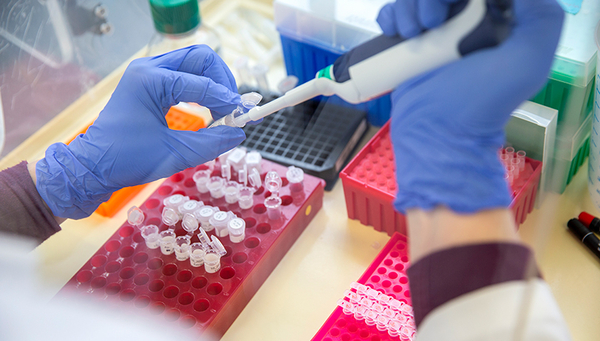News Detail
Monitoring SARS-CoV-2 mutations thanks to wastewater sampling and bioinformatics
July 18, 2022 |
One of the researchers involved at Eawag is environmental microbiologist Tim Julian - three questions for him:

The study shows how wastewater analytics combined with bioinformatics was able to document the outbreak of the alpha variant in two Swiss cities up to 13 days before the first cases became known via clinical trials in late 2020. Since then, at least 4 more variants have come - did the team involved also detect this so early each time?
Yes, our wastewater samples were used to detect not only Alpha early but also Delta, as discussed in the paper. Interestingly, we detected Delta transiently in Lausanne 118 days before the first clinical detection. Omicron (B.1.1.529) was first detected in sequences from Basel Stadt, which is a reflection of their early investments in an effective wastewater surveillance system inclusive of sequencing. You can read about that in their recent publication in Swiss Medical Weekly, as well. I am confident new variants will also be detectable early in wastewater, so we are actively discussing how we can speed up time that lapses between sampling and data analysis.
How was the cooperation with the authorities from your point of view?
We have been in a good situation in Switzerland in that we have regular engagement with cantonal laboratories and federal offices. As the authorship on our paper shows, the work is an example of the effectiveness of strong networks within the ETH Domain that allow rapid and, from at least my perspective, easy collaboration. These networks further facilitated knowledge exchange of our findings directly to the authorities, particularly during the emergence of Alpha, Delta, and Omicron, when wastewater provided early insights into the emergence and rise of these variants in Switzerland. The degree to which this influenced policy, I cannot say, but certainly, the dissemination of our findings was driven by regular interest and engagement across all levels.
Are you personally concerned that new variants of the SARS-CoV-2 virus will soon emerge that may cause more severe courses of the disease or be even more contagious than the previous ones?
It is clear that new variants will continue to emerge. Right now, there is interest in BA.2.75, for example. The most recent emerging variants are associated with increased transmissibility. Luckily, we have not seen dramatic increases in severity of disease, but we cannot rule out this possibility in the future. That said, we are much more prepared to deal with SARS-CoV-2 infections than we were at the start of the pandemic. For example, we have learned a lot about how the virus transmits and how to treat infections in hospitals. We also now have effective vaccines. Nevertheless, I believe we need to continue robust surveillance globally to identify new variants and understand their characteristics as early as possible. This is important so that – when we need to – we can implement effective interventions with minimal disruption to our lives. Unfortunately, clinical surveillance systems appear to be reducing or even stopping across the world. As our paper shows, wastewater is helpful for early detection of emerging variants and can inform transmission fitness. Wastewater offers a lower cost approach to help bolster – but certainly not replace – clinical surveillance.
Originalpaper
Early detection and surveillance of SARS-CoV-2 genomic variants in wastewater using COJAC; DOI 10.1038/s41564-022-01185-x. https://www.nature.com/articles/s41564-022-01185-x.
Cover picture: Wastewater samples being prepared for PCR analysis.
(Photo: Eawag, Esther Michel)

